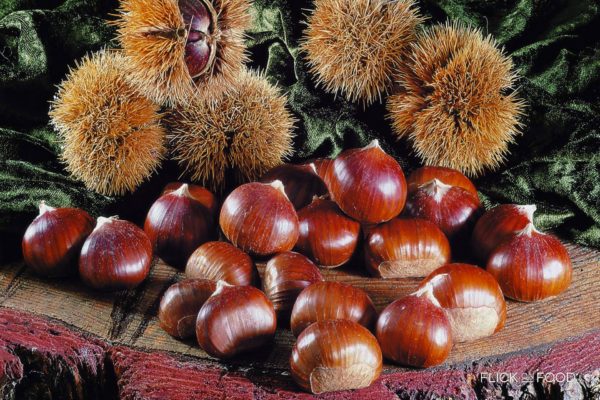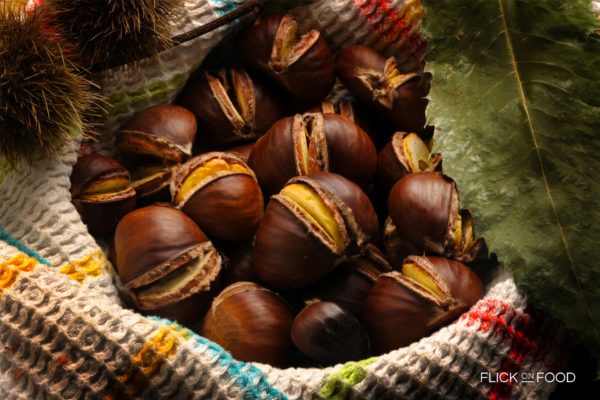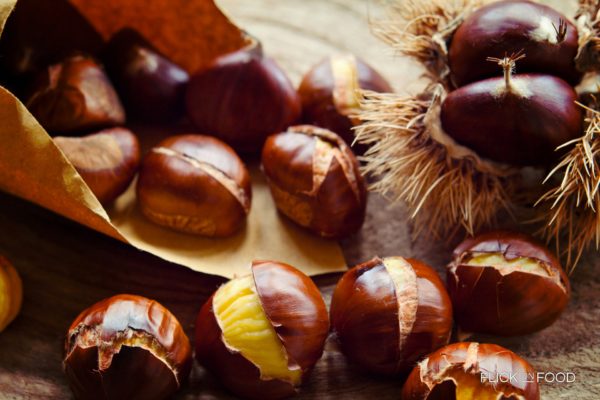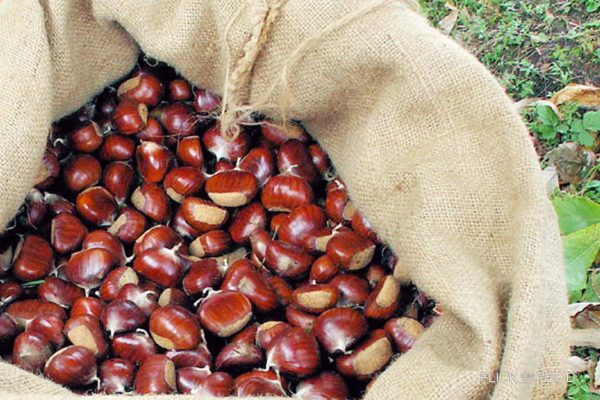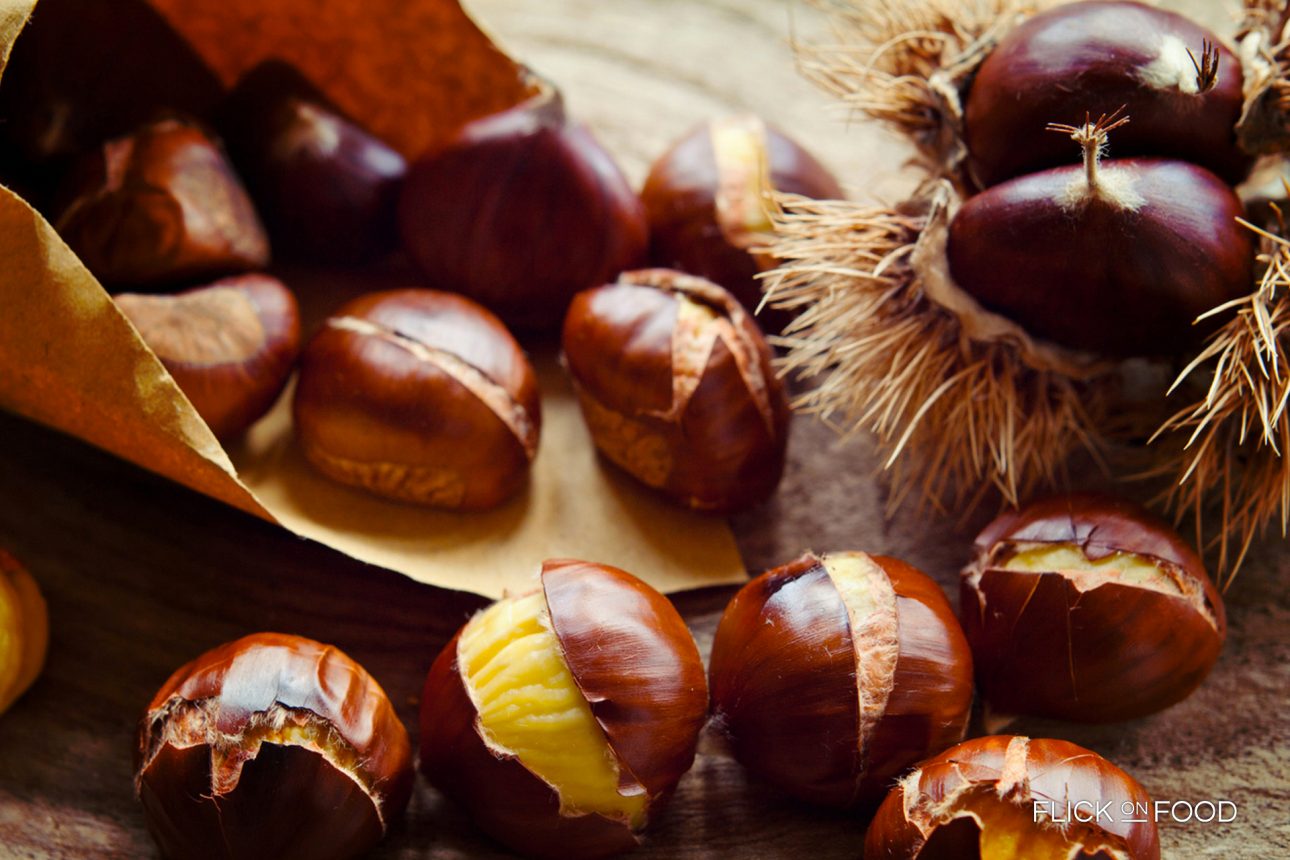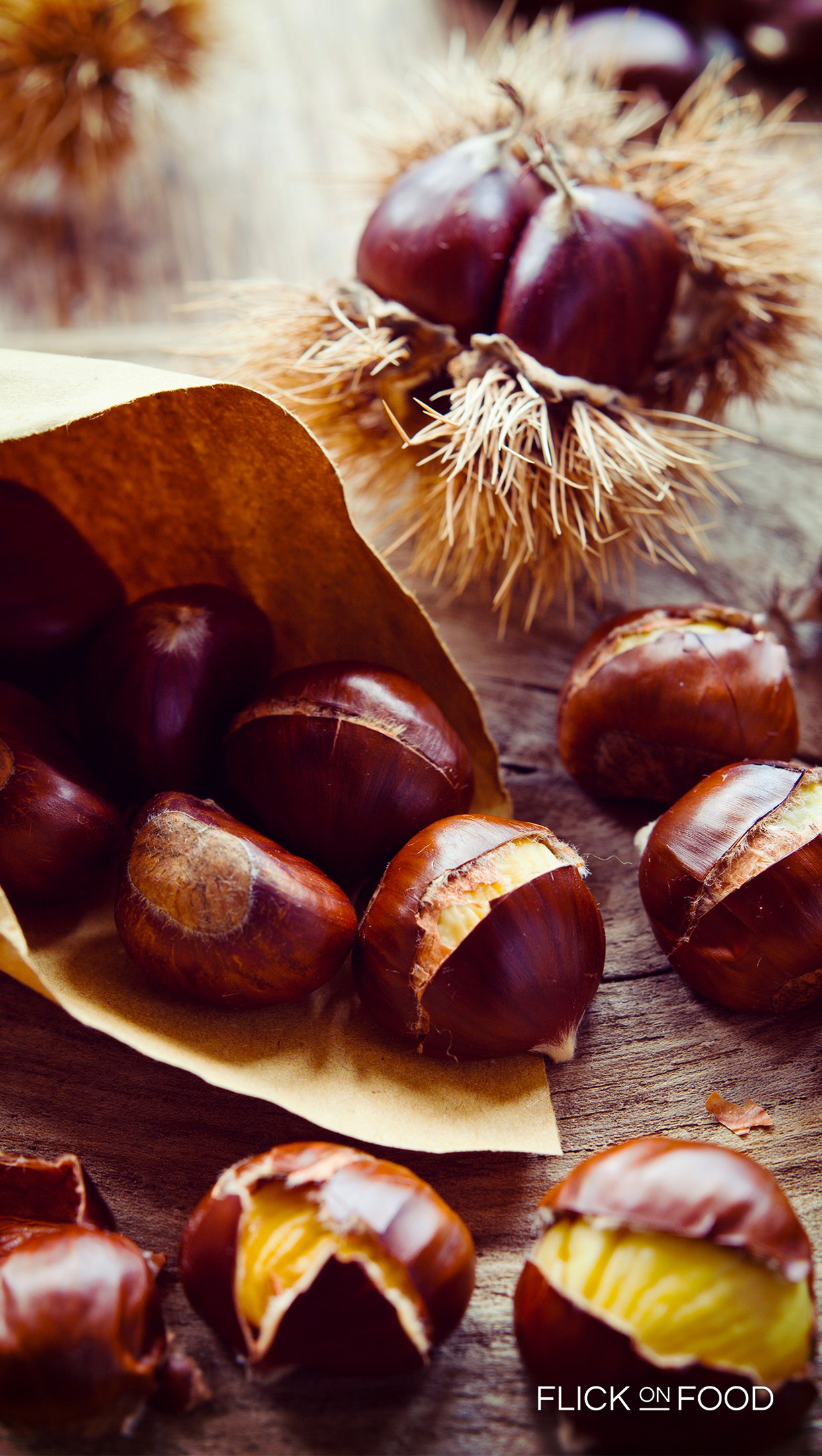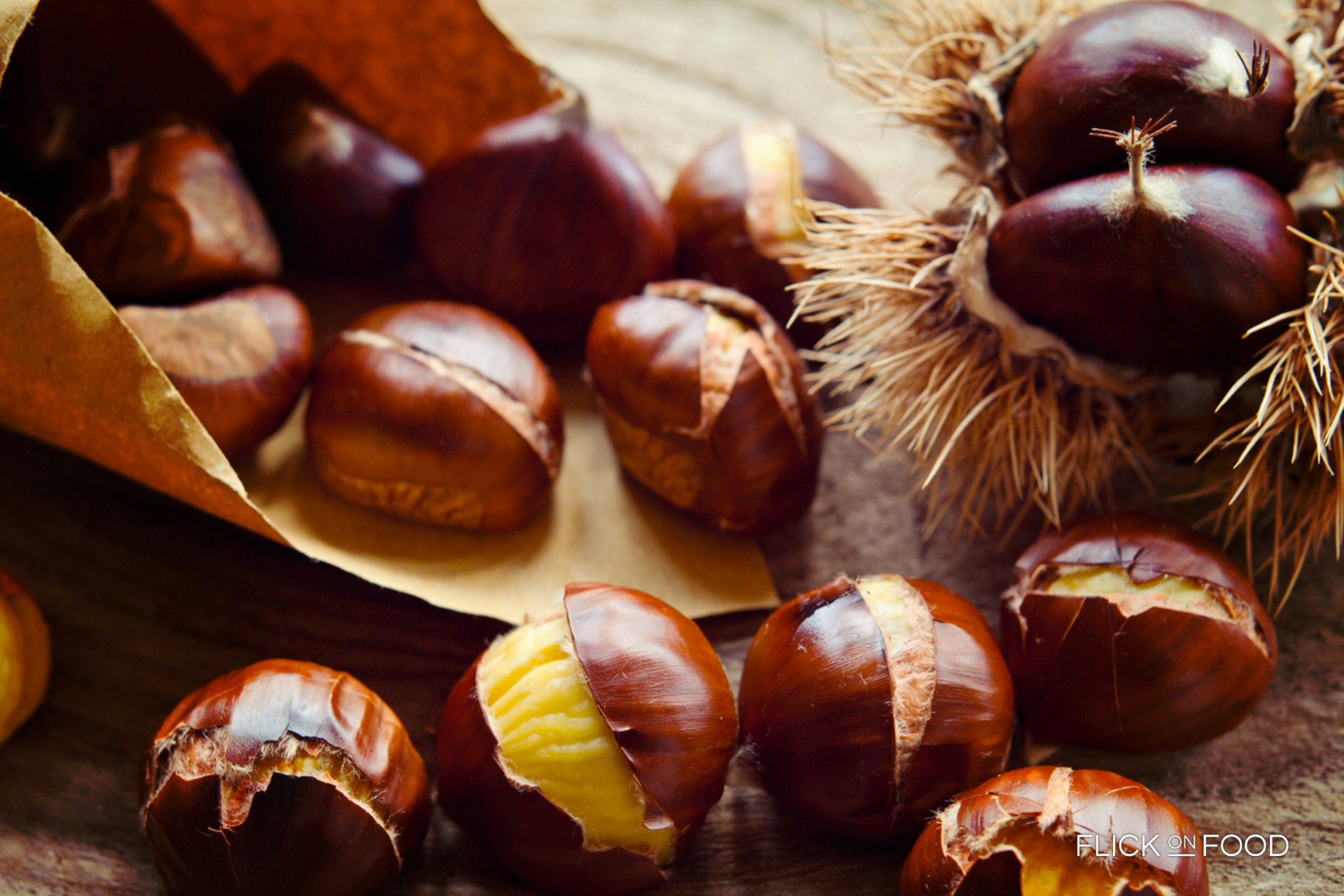
Excellent roasted or boiled, with a glass of red wine. Sweet and aromatic!
Origin
Nestled among the Tosco-Romagnolo Apennines in the town of Caprese in the province of Arezzo, there’s one product that represents the whole territory: the Caprese Michelangelo chestnut. In 1913, the tiny town of Caprese changed its name to pay homage to its most renowned citizen, Michelangelo Buonarroti. The terrain and climate of Caprese offer the ideal environment for chestnuts, and archaeological evidence can testify to the fact that they were already an important resource for the Etruscans, and then the Romans who populated the area. Chestnut trees were originally used by local people to build furniture, but they eventually became a trade item as Benedictine monks encouraged their production. Even today, the chestnut market is an excellent source of income for the local population.
Cookit
What sets Caprese chestnuts apart is that they’re particularly starchy. This made them an ideal ingredient because they could compensate for the scarcity of grain during the winter months, especially if they were dried or in the form of chestnut flour. Roasted or boiled, these chestnuts have a more delicate, sweeter flavor than other types. They’re also excellent peeled, boiled in lightly salted water with wild fennel stalks. They’re used in many traditional recipes, including croquettes or desserts like the famous Mont Blanc torte.
Did you know
It’s said that Michelangelo Buonarroti, important figure in the Italian Renaissance and native of Caprese Michelangelo, regularly dined on this food from the time he was very young. In fact, for the people of Caprese, chestnuts were an important part of their nourishment, often used in place of grain and bread. Today in Caprese there is a chestnut festival every other weekend in October, where you can taste the freshest chestnuts in their peak season, which goes from October to December.



